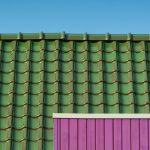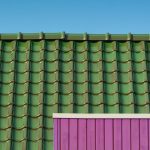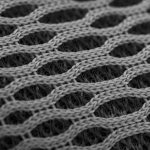Are you tired of your linen fabric getting ruined by water stains? In this article, we will show you how to make your linen fabric waterproof.
By following our simple steps, you can protect your favorite linen pieces from water damage and extend their lifespan.
From choosing the right fabric to applying the waterproofing solution, we will guide you through the entire process.
Say goodbye to wet and ruined linen – let’s make it waterproof!
Table of Contents
Choosing the Right Linen Fabric
When choosing the right linen fabric, it’s important to consider its waterproof properties. Linen, a natural fabric made from the flax plant, can be treated to become water-resistant or even fully waterproof. The waterproofing process involves applying a special coating to the fabric that creates a barrier against water penetration. This coating can be made from various waterproofing materials, such as silicone, wax, or polyurethane.
Silicone-based coatings are popular for their excellent water repellency and durability. They create a thin, invisible layer on the fabric’s surface that prevents water from seeping through. Wax coatings, on the other hand, provide a more natural and breathable waterproofing option. They penetrate the fabric fibers and form a protective layer that repels water while still allowing air to pass through. Polyurethane coatings offer a combination of water resistance and breathability. They are commonly used for outdoor applications, as they provide a high level of waterproofing while maintaining the fabric’s flexibility and comfort.
When choosing a waterproof linen fabric, consider the intended use and desired level of waterproofing. If you need maximum protection against water, opt for a fabric with a silicone or polyurethane coating. For a more breathable option, choose a linen fabric with a wax coating. Understanding the different waterproofing materials and their properties will help you make an informed decision and select the right linen fabric for your needs.
Preparing the Fabric for Waterproofing
Before beginning the waterproofing process, it’s important to properly prepare the linen fabric. This step is crucial to ensure that the fabric absorbs the waterproofing agents effectively and remains durable.
To prepare the fabric, start by thoroughly cleaning it. Remove any dirt, stains, or debris by gently washing the linen with a mild detergent. Avoid using harsh chemicals or bleach, as they can damage the fabric. Once cleaned, rinse the fabric thoroughly to remove any soap residue.
After rinsing, allow the linen to air dry completely. Next, iron the fabric to remove any wrinkles or creases. This step is important as it ensures a smooth surface for the application of the waterproofing agents.
Now, you are ready to apply the waterproofing techniques of your choice. Whether you opt for sprays, waxes, or coatings, following the manufacturer’s instructions is essential. Remember to apply the waterproofing agents evenly and generously, focusing on the areas that are more prone to moisture absorption.
Allow the fabric to dry completely before using or storing it. By properly preparing the linen fabric, you can maximize the effectiveness of the waterproofing process and enjoy the benefits of water-resistant and durable fabric.
Selecting the Waterproofing Method
To select the waterproofing method that suits your needs, consider factors such as the intended use of the fabric and the desired level of water resistance. There are several waterproofing alternatives available, each with its own pros and cons. Here are some options to consider:
-
Wax-based waterproofing:
-
Pros:
-
Provides effective water repellency.
-
Easy to apply and reapply as needed.
-
Cons:
-
Can alter the fabric’s appearance and texture.
-
May require more frequent reapplication.
-
Silicone-based waterproofing:
-
Pros:
-
Forms a durable, long-lasting barrier against water.
-
Does not affect the fabric’s appearance or texture.
-
Cons:
-
Can be more challenging to apply evenly.
-
May require additional ventilation during application.
When selecting a waterproofing method, it is important to consider the specific requirements of your fabric and your intended use. If you’re looking for a temporary solution or prefer a natural option, wax-based waterproofing may be suitable. On the other hand, if you need a long-lasting and invisible waterproofing solution, silicone-based waterproofing might be the better choice. Ultimately, it is essential to weigh the pros and cons of each method and select the one that best meets your needs.
Applying the Waterproofing Solution
When it comes to applying a waterproofing solution, you need to know the best techniques to ensure maximum effectiveness.
In addition, using recommended waterproofing products can greatly enhance the results and protect your material from moisture damage.
After application, it’s crucial to consider the drying time to ensure that the waterproofing solution sets properly and provides long-lasting protection.
Best Waterproofing Techniques
The best techniques for waterproofing linen fabric are using wax or silicone-based sprays. These options provide effective protection against water damage while maintaining the natural look and feel of the fabric. Here are some tips to help you achieve the best results:
-
Wax-based waterproofing:
-
Apply a thin layer of wax onto the fabric.
-
Use a hairdryer or heat gun to melt the wax into the fabric fibers, ensuring even coverage.
-
Silicone-based sprays:
-
Spray the silicone-based product evenly onto the fabric surface.
-
Allow it to dry completely before testing the water repellency.
When waterproofing linen fabric, it’s important to avoid common mistakes such as:
- Using too much product, which can lead to a sticky or greasy feel.
- Neglecting to test the waterproofing before using the fabric in wet conditions.
Recommended Waterproofing Products
For the best results, you should consider using either a wax-based spray or a silicone-based spray for waterproofing. These two products are highly recommended for waterproofing linen fabric.
Wax-based sprays create a protective barrier that repels water, while silicone-based sprays provide a waterproof coating. Both options are effective in preventing water from penetrating the fabric and keeping it dry.
When applying the spray, make sure to follow the instructions on the product label for the best application technique. It is also important to clean the fabric before waterproofing to ensure optimal results. Use recommended cleaning methods, such as gentle hand washing or spot cleaning, to remove any dirt or stains from the fabric.
Once the fabric is clean and dry, apply the waterproofing spray evenly, and allow it to fully dry before using or storing the fabric.
Drying Time After Application
After applying the spray, it’s important to let it dry completely before using or storing the fabric. The drying time may vary depending on the drying techniques used and the effects of humidity in the environment.
To ensure proper drying, follow these steps:
- Choose a well-ventilated area with good air circulation to speed up the drying process.
- If possible, hang the fabric outdoors on a clothesline to take advantage of natural airflow.
- Avoid direct sunlight as it may cause fading or discoloration.
- If indoor drying is necessary, use a fan or open windows to enhance air circulation.
It’s essential to allow the fabric to dry thoroughly to prevent any moisture from getting trapped, which could lead to mold or mildew growth.
Drying and Curing the Fabric
To ensure your fabric is properly dried and cured, you’ll need to follow these steps. First, you need to understand the difference between drying and curing. Drying refers to the removal of moisture from the fabric, while curing is the process of allowing the fabric to fully bond with the waterproofing agent and reach its maximum effectiveness.
When it comes to drying techniques, there are a few options you can choose from. The most common method is air drying, where you simply hang the fabric in a well-ventilated area and allow it to dry naturally. This can take anywhere from a few hours to a couple of days, depending on the weather conditions and the thickness of the fabric. Another option is using a clothes dryer, set on a low heat setting. This can help speed up the drying process, but be careful not to use high heat as it may damage the fabric or affect the waterproofing agent.
Once the fabric is dry, it’s time to move on to the curing process. This is an important step to ensure the waterproofing agent fully penetrates the fabric fibers and creates a strong bond. To cure the fabric, you’ll need to apply heat. The easiest way to do this is by using an iron on a low heat setting. Simply place a piece of cloth over the fabric and iron it for a few minutes, making sure to move the iron around to evenly distribute the heat. Alternatively, you can use a hairdryer on a low heat setting, moving it back and forth over the fabric until it is fully cured.
To summarize, drying and curing your fabric is crucial to ensure the waterproofing agent bonds effectively. Use air drying or a low heat setting in a clothes dryer to dry the fabric, and then apply heat using an iron or a hairdryer to cure it. Follow these steps, and you’ll have properly dried and cured fabric ready for any rainy adventure.
| Drying Techniques | Curing Process |
|---|---|
| Air drying | Iron on low heat |
| Clothes dryer on low heat | Hairdryer on low heat |
Testing the Waterproofing
Now that your fabric is properly dried and cured, it’s time to test the effectiveness of the waterproofing agent. To ensure the durability of the waterproofing, it is important to conduct a thorough test.
Here are a couple of methods you can use to determine the effectiveness of the waterproofing:
-
Water Droplet Test: Apply a few drops of water onto the fabric and observe how the water behaves. If the water forms beads and rolls off the fabric without being absorbed, it indicates that the waterproofing agent is working effectively. On the other hand, if the water seeps into the fabric or spreads out, it suggests that the waterproofing might need to be reapplied.
-
Fabric Immersion Test: Submerge a small piece of the fabric in water for a few minutes. Remove it from the water and carefully examine it. If the fabric remains dry and water-resistant, it means that the waterproofing agent has effectively protected the fabric. However, if the fabric becomes wet or absorbs water, it indicates that the waterproofing may not be as durable as desired.
Maintaining the Waterproofed Linen Fabric
When it comes to maintaining your waterproofed linen fabric, it’s important to consider the longevity of the waterproofing and the recommended cleaning methods. You may be wondering how long the waterproofing will last and how often you need to clean the fabric to maintain its waterproof capabilities.
In this discussion, we will explore the factors that affect the longevity of the waterproofing and provide you with recommended cleaning methods to ensure your waterproofed linen fabric stays in excellent condition.
Longevity of Waterproofing
The longevity of waterproofing can be improved by using a fabric sealant. By applying a fabric sealant to your waterproofed linen fabric, you can enhance its durability and ensure that it remains water-resistant for a longer period of time. Here are some benefits of using a fabric sealant:
-
Increased resistance to water damage: The fabric sealant creates a protective barrier that prevents water from seeping into the fabric, reducing the risk of damage caused by moisture. This increased resistance to water damage helps to prolong the lifespan of your waterproofed linen fabric.
-
Enhanced stain resistance: The fabric sealant also helps to repel stains, making it easier to clean and maintain your waterproofed linen fabric. It prevents spills and stains from penetrating the fabric, allowing you to wipe them away before they have a chance to set.
Recommended Cleaning Methods
To ensure that your waterproofed fabric remains clean and in good condition, it’s recommended to gently spot clean any stains using a mild detergent and a soft cloth.
When it comes to cleaning techniques for waterproof linen fabric, the key is to be gentle and avoid harsh chemicals or abrasive materials that could damage the fabric or compromise its waterproofing properties.
Start by blotting the stain with a clean, damp cloth to remove any excess liquid or debris. Then, mix a small amount of mild detergent with water and apply it to the stain using a soft cloth. Gently rub the area in a circular motion, being careful not to scrub too vigorously.
Rinse the area with clean water and blot dry with a towel. By following these simple steps, you can effectively remove stains from your waterproof linen fabric without compromising its quality.
Conclusion
In conclusion, making waterproof linen fabric is a straightforward process. It requires careful selection of the right fabric, thorough preparation, and the application of a suitable waterproofing solution.
By following the steps outlined in this article, you can effectively waterproof your linen fabric. This will ensure its durability and protection against water damage.
Remember to test the waterproofing and maintain the fabric regularly. This will help to prolong its waterproof properties.
With these tips, you can enjoy your waterproof linen fabric for years to come.
- How Does Ring Spun Cotton Affect Garment Fit and Shape Retention? - August 13, 2024
- What Are the Challenges in Producing Ring Spun Cotton? - August 13, 2024
- Is Ring Spun Cotton Suitable for Plus-Size Clothing? - August 13, 2024




